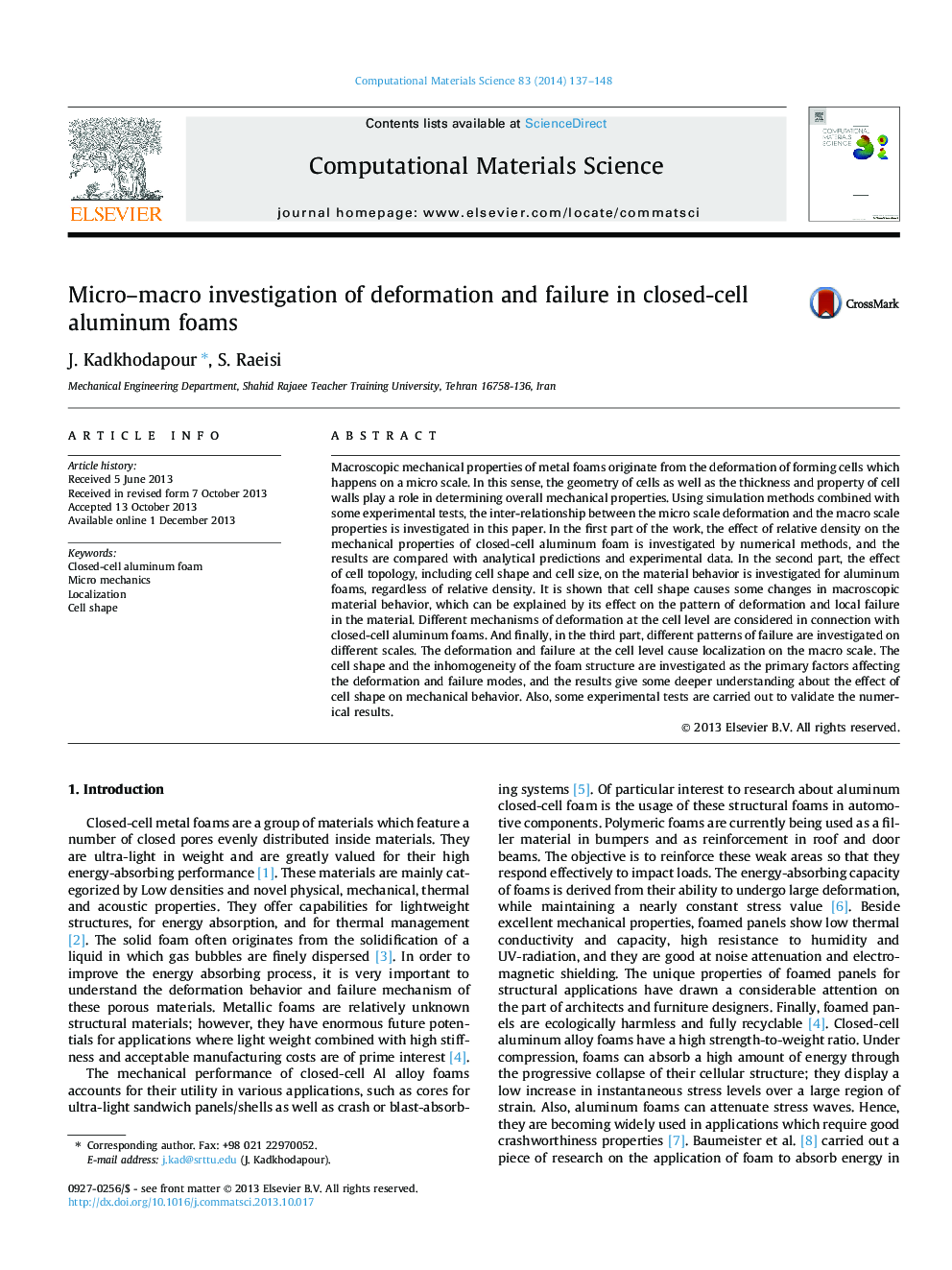| Article ID | Journal | Published Year | Pages | File Type |
|---|---|---|---|---|
| 1561045 | Computational Materials Science | 2014 | 12 Pages |
Abstract
Macroscopic mechanical properties of metal foams originate from the deformation of forming cells which happens on a micro scale. In this sense, the geometry of cells as well as the thickness and property of cell walls play a role in determining overall mechanical properties. Using simulation methods combined with some experimental tests, the inter-relationship between the micro scale deformation and the macro scale properties is investigated in this paper. In the first part of the work, the effect of relative density on the mechanical properties of closed-cell aluminum foam is investigated by numerical methods, and the results are compared with analytical predictions and experimental data. In the second part, the effect of cell topology, including cell shape and cell size, on the material behavior is investigated for aluminum foams, regardless of relative density. It is shown that cell shape causes some changes in macroscopic material behavior, which can be explained by its effect on the pattern of deformation and local failure in the material. Different mechanisms of deformation at the cell level are considered in connection with closed-cell aluminum foams. And finally, in the third part, different patterns of failure are investigated on different scales. The deformation and failure at the cell level cause localization on the macro scale. The cell shape and the inhomogeneity of the foam structure are investigated as the primary factors affecting the deformation and failure modes, and the results give some deeper understanding about the effect of cell shape on mechanical behavior. Also, some experimental tests are carried out to validate the numerical results.
Related Topics
Physical Sciences and Engineering
Engineering
Computational Mechanics
Authors
J. Kadkhodapour, S. Raeisi,
